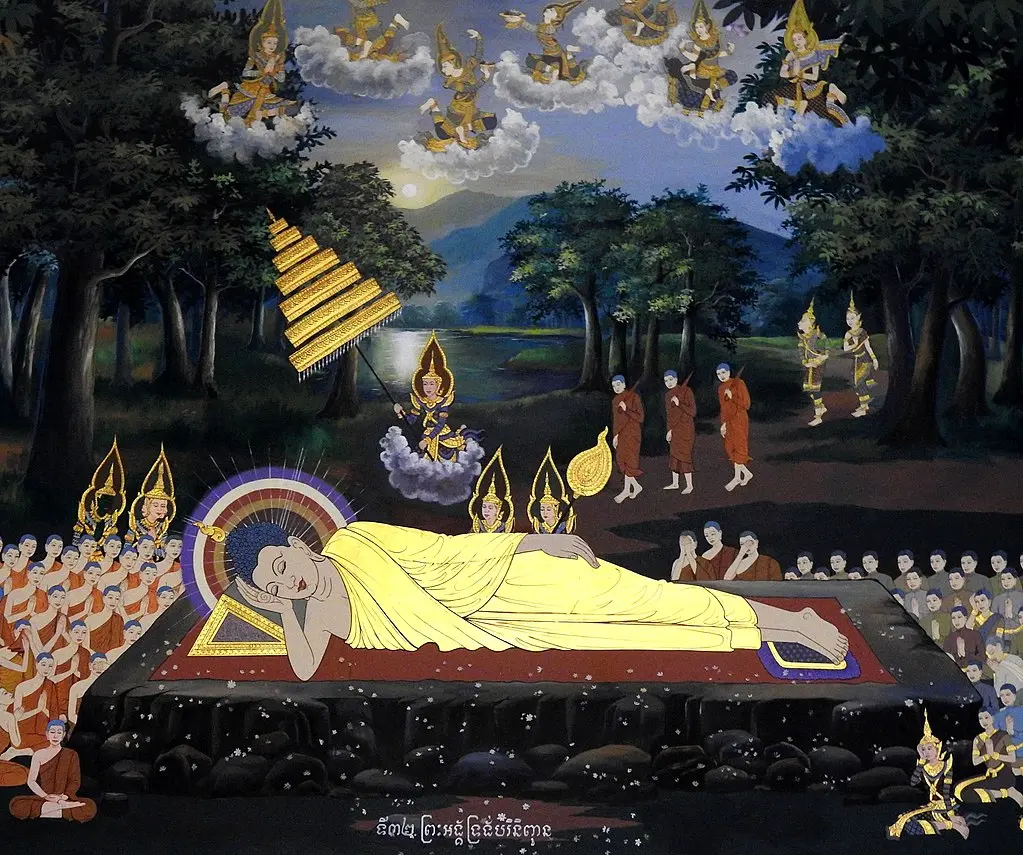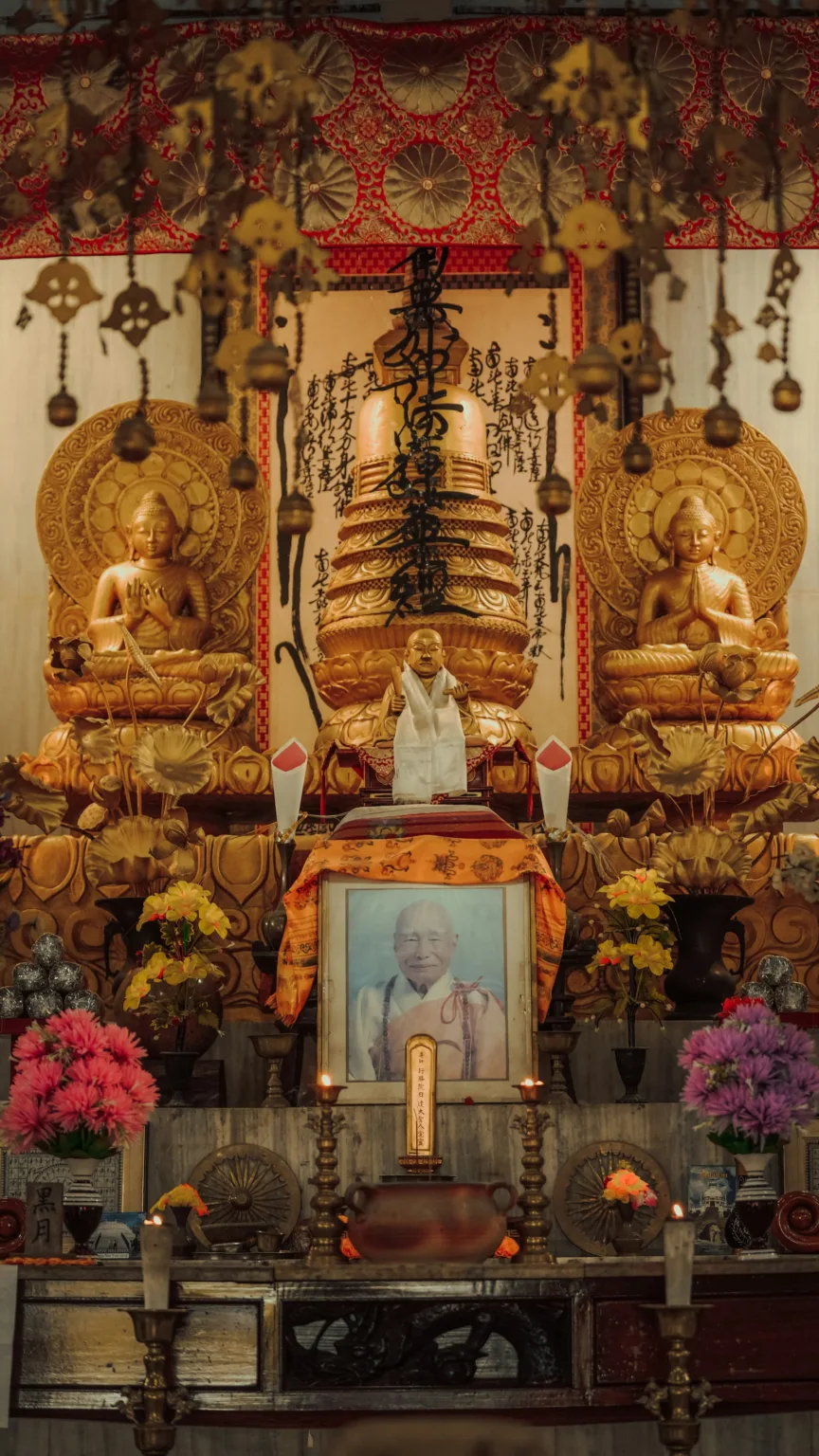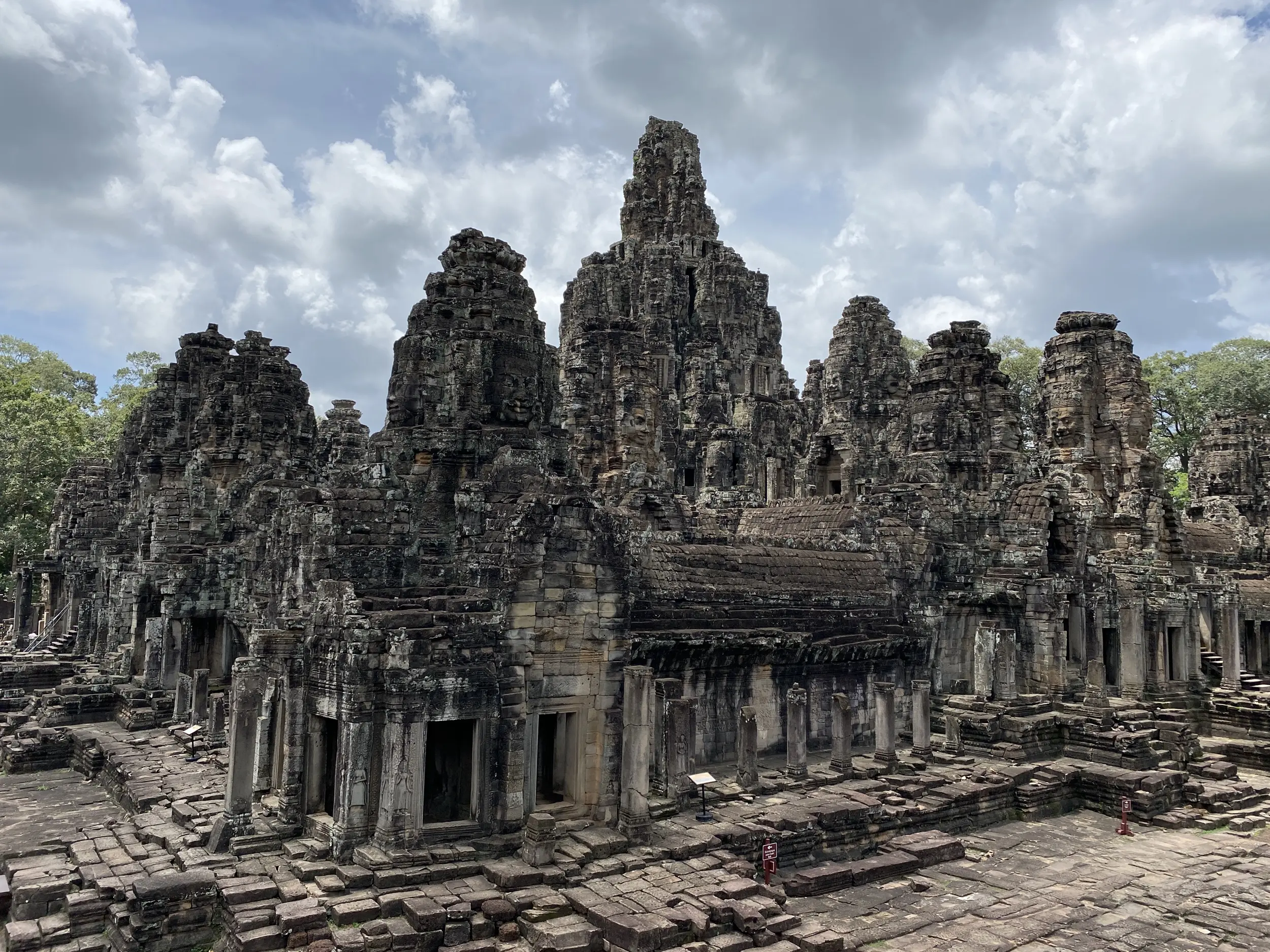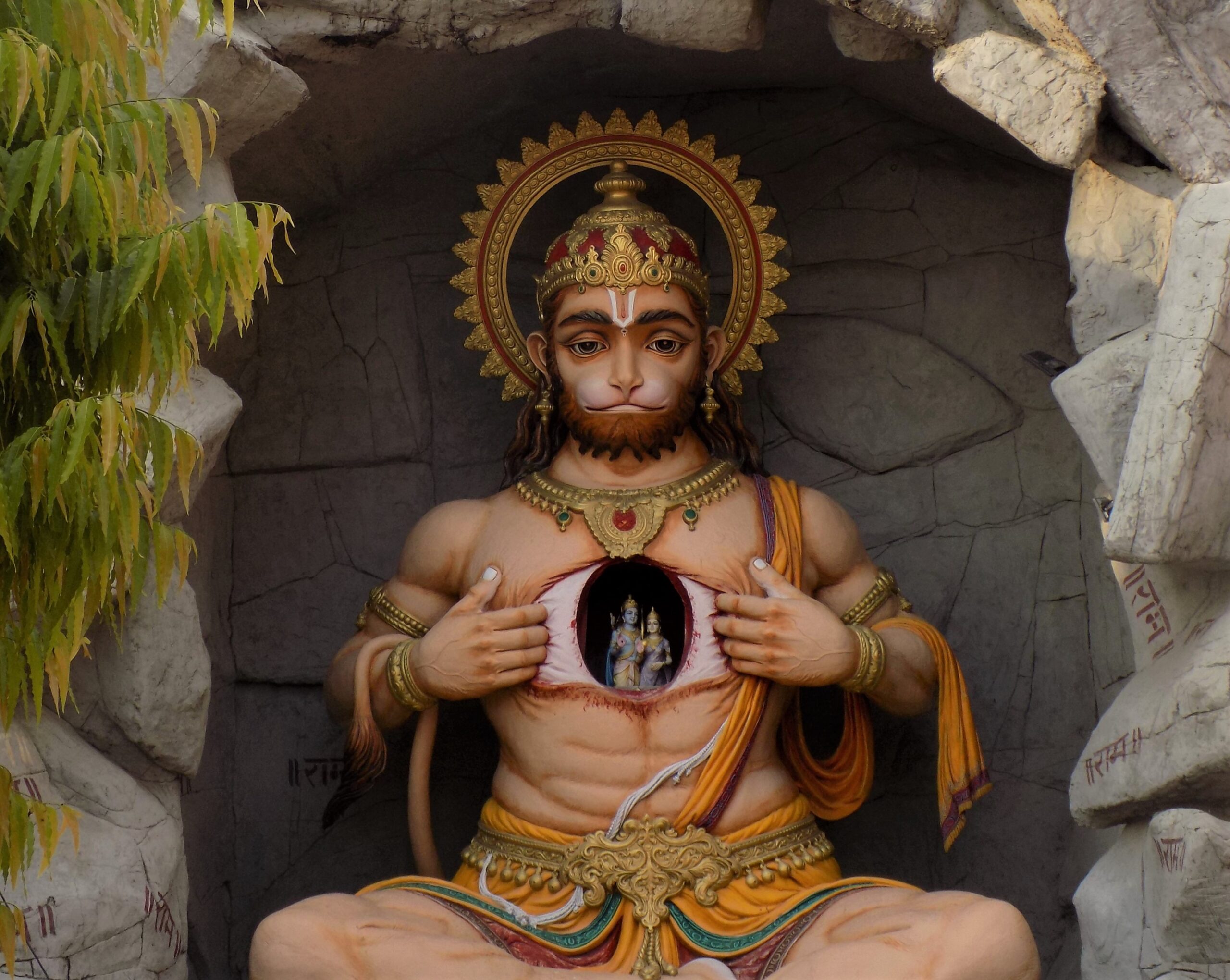What comes into your mind when you hear the word “Enlightenment“? There are so many ways to interpret it, but for this article, we’ll be taking a look at what Buddhism brings to the table.
Enlightenment in Buddhism is a profound state of understanding and liberation aimed at transcending suffering and the continual cycle of rebirth.
The Theravada tradition, one of the oldest schools of Buddhism, dates back over 2,500 years to the teachings of Gautama Buddha in what is now Nepal and India. Predominant in countries like Sri Lanka, Thailand, and Myanmar, Theravada’s approach outlines a clear and methodical path to enlightenment.
This path is not only about achieving personal peace but also about cultivating virtues that benefit all beings. Through this journey, practitioners aim to gain transformative insights that lead to true liberation.
Let’s dive in shall we?
Table of Contents
Toggle
What is Enlightenment?
In Theravada Buddhism, enlightenment is defined as achieving Nirvana—a state where an individual transcends the cycle of suffering and rebirth, reaching a profound understanding of reality. This ultimate goal of Buddhist practice is not just the cessation of suffering but also the attainment of a deep, abiding peace and liberation. Nirvana is often described as the extinguishing of the fires of desire, aversion, and delusion that perpetuate human suffering.
Central to reaching enlightenment in the Theravada tradition is the practice of insight (vipassana) meditation. This form of meditation focuses on cultivating a deep and direct understanding of the nature of reality, specifically through the lens of the three marks of existence: impermanence (anicca), suffering (dukkha), and non-self (anatta).
Through vipassana, practitioners observe firsthand the constant change and inherent dissatisfaction in all experiences, and the absence of a permanent, unchanging self. This practice is crucial for developing the wisdom needed to uproot the ignorance that binds beings to the cycle of rebirth.
The teachings and practices related to enlightenment are extensively documented in the Pali Canon, which is the authoritative text of the Theravada Buddhist tradition. This collection of scriptures, written in the Pali language, includes detailed discourses of the Buddha, rules of monastic discipline, and extensive philosophical treatises. Among these texts, the Sutta Pitaka is particularly relevant as it contains the discourses of the Buddha that outline the path to enlightenment, including descriptions of the stages of spiritual attainment.
The Four Stages of Enlightenment

1. Stream-Enterer (Sotapanna)
In Theravada Buddhism, the path to enlightenment begins with reaching the first major milestone known as becoming a Stream-Enterer. This stage represents the first significant breakthrough that sets a person firmly on the path to full spiritual awakening.
A Stream-Enterer has achieved a crucial insight: a direct and personal understanding that life is inherently impermanent and ever-changing, that suffering is part of the human condition, and that there is no unchanging, permanent self at the core of our existence. This realization might sound abstract, but it’s akin to seeing the world in a completely new light—a light that reveals the true nature of life and our personal experiences.
At this stage, three major misconceptions are overcome:
- The belief in a permanent self: Often, we think of ourselves as having a static, unchanging identity. However, a Stream-Enterer sees through this illusion, recognizing that what we consider “self” is actually a continuous flow of changing thoughts, emotions, and physical sensations.
- Doubt in the path: They gain confidence in the teachings of Buddhism, having experienced firsthand the truth in the Buddha’s teachings about reality and the path to liberation.
- Over-reliance on rituals: They understand that while religious rituals can support spiritual practice, they are not ends in themselves. True progress involves internal change and ethical living.
One of the most encouraging aspects of reaching this stage is the implication it has for one’s future: a Stream-Enterer will not be reborn more than seven times and these rebirths will be in conditions conducive to continuing their spiritual progress. This is significant because it means they have effectively limited the amount of suffering they will have to endure in future lives.
2. Once-Returner (Sakadagami)
Following the significant breakthrough as a Stream-Enterer, the next step on the path to enlightenment is becoming a Once-Returner.
A Once-Returner has achieved further crucial insights, specifically in their understanding of desire and aversion. This progression means they experience a significant reduction in sensual desires and feelings of ill will. These states are not completely gone but are weakened enough that they do not dominate the person’s actions or cause significant internal conflict.
At this stage, two main issues are further attenuated:
- Sensual Desire: The grip of physical and emotional pleasures is loosened. A Once-Returner enjoys these aspects of life but is not controlled by them. They approach pleasures with a balanced perspective, understanding the transient nature of these experiences.
- Ill Will: Negative emotions such as anger or resentment are greatly diminished. This allows for a more serene and understanding interaction with the world, which contributes to smoother personal relationships and a more peaceful life.
Individuals at this stage are destined to return to the human realm only one more time. This ensures that they have one more lifetime to work towards full enlightenment, under favorable conditions that facilitate their spiritual growth.

3. Non-Returner (Anagami)
After progressing through the stages of a Stream-Enterer and a Once-Returner, the next significant stage is that of the Non-Returner, or “Anagami.”
A Non-Returner has achieved an even deeper level of realization compared to the previous stages. At this point, they have completely overcome the two significant impediments that affect most people deeply: sensual desire and ill will. This means they no longer feel any form of sexual craving or desire for sensual pleasures, and they are free from feelings of anger and bitterness. This freedom allows them to experience a level of peace and contentment that is not easily disturbed by external circumstances or internal emotions:
- Complete Overcoming of Sensual Desire: Unlike the Once-Returner, who has weakened sensual desires, the Non-Returner has eradicated these desires entirely. This eradication signifies a profound disengagement from the typical sources of human attachment and suffering.
- Complete Overcoming of Ill Will: Similarly, all forms of ill will, resentment, and anger are completely absent in the Non-Returner. This allows for constant kindness and compassion in interactions with others, regardless of the circumstances.
A Non-Returner will not return to the human world after death. Instead, they are reborn in the Pure Lands, which are a series of high heavenly realms reserved for those who have reached this advanced stage of enlightenment. In these realms, Non-Returners live out their existence until they achieve Nirvana.
4. Arahant
The final stage in the path is reaching the state of an Arahant, which signifies achieving full enlightenment and liberation. This stage marks the culmination of a practitioner’s spiritual journey, where they have completely freed themselves from all forms of mental bondage and suffering.
An Arahant has successfully liberated themselves from all ten fetters that bind beings to the cycle of rebirth. These fetters are:
- Belief in a personal self
- Skeptical doubt
- Clinging to rites and rituals
- Sensual desire
- Ill will
- Desire for material existence
- Desire for immaterial existence
- Conceit
- Restlessness
- Ignorance
By overcoming these fetters, an Arahant no longer experiences personal craving or aversion, and they are free from the subtlest layers of delusion that obscure true insight into the nature of reality.
For an Arahant, Nirvana means living with an unconditioned freedom that is not tainted by the usual human limitations of desire, anger, or ignorance. It is a state characterized by permanent liberation and profound tranquility.

Conclusion
Each stage of enlightenment marks significant personal transformations where practitioners overcome specific mental fetters that bind them to the cycle of suffering and rebirth. This path not only deepens one’s understanding of the nature of reality but also enhances one’s ability to live with peace and compassion.
The teachings and practices associated with these stages of enlightenment have universal applicability, offering valuable insights even for those outside traditional Buddhist circles. The principles of mindfulness, ethical conduct, and personal insight into the nature of suffering and impermanence can benefit anyone. By adopting aspects of this path, individuals can cultivate a more mindful and compassionate approach to life, manage stress more effectively, and achieve a deeper sense of personal peace.
For those intrigued by the path outlined in Theravada Buddhism, the journey is both challenging and deeply rewarding. It demands dedication, consistent practice, and a willingness to delve deeply into personal and philosophical explorations. However, the fruits of such labor are significant, not only for personal enlightenment but also for contributing to the well-being of others through increased compassion and understanding.
Therefore, whether one is a full participant in the Buddhist path or a curious observer, there is much to gain from studying and practicing these teachings. Continued exploration and application of Buddhist principles can lead to profound personal transformations, enriching one’s life experience and enhancing one’s capacity to contribute positively to the world. Thus, it is encouraged for everyone, regardless of their spiritual background, to continue learning about and practicing these teachings to uncover their full potential for wisdom and compassion.













